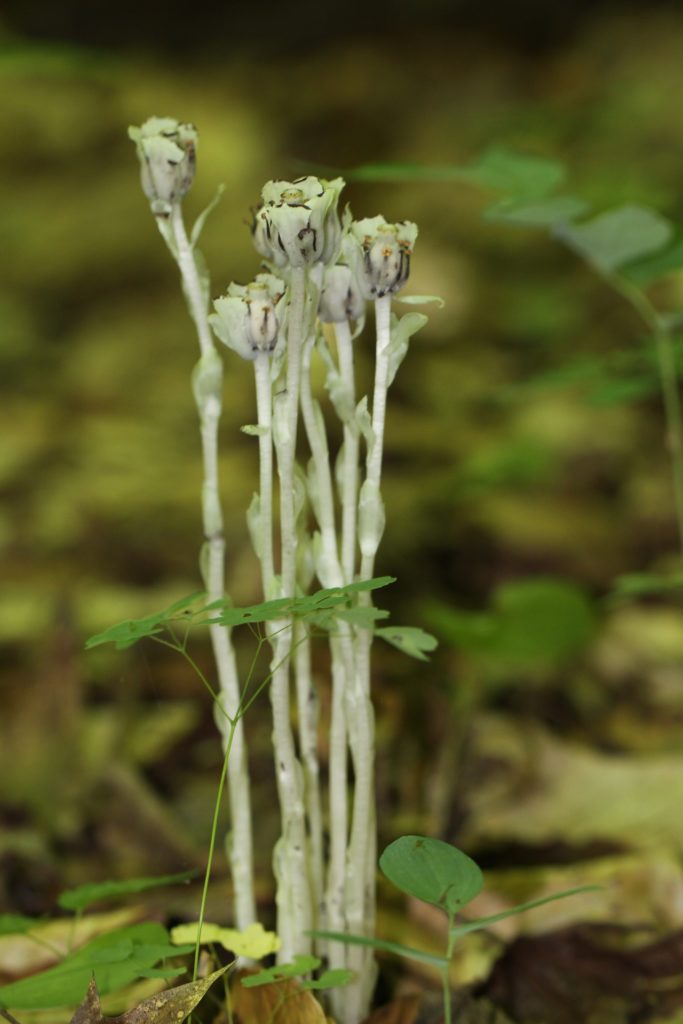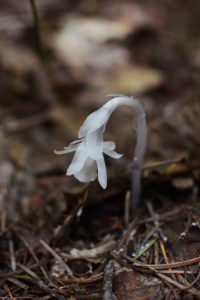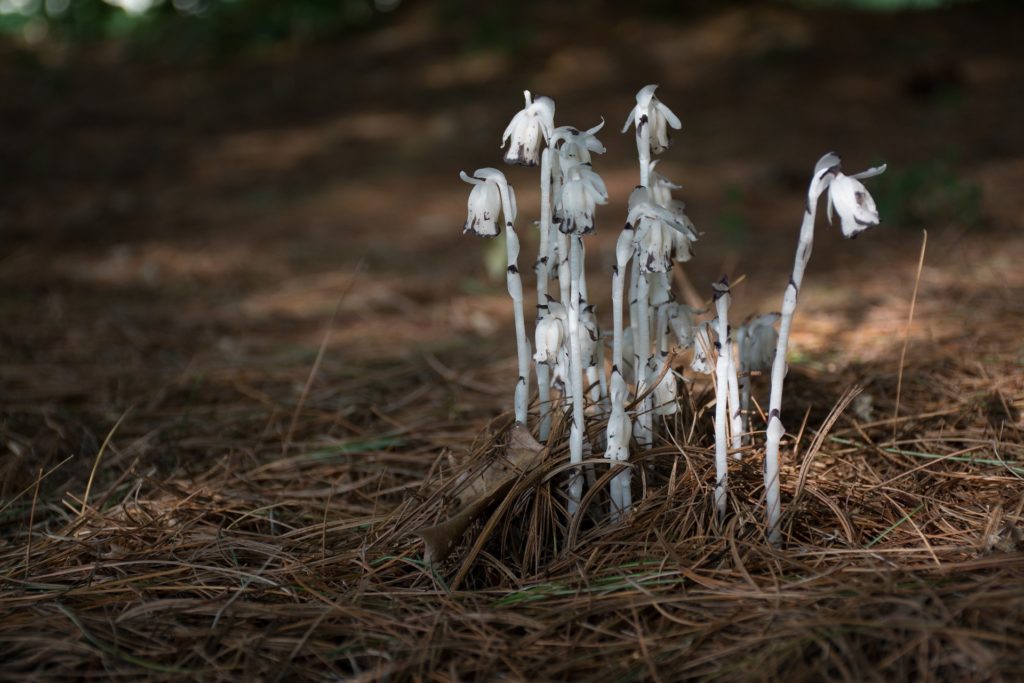The Flower That Grows in the Dark
Meet the ghost plant (Monotropa uniflora)
February 10, 2021
By Emma Schell, Scheduling Coordinator
When you think of Georgia wildflowers, you might imagine milkweeds stretching towards the sky, wild indigo with its rich blue petals, or the echinacea that is sold in some health stores. A wildflower can be defined as any flowering plant that grows without the help of humans. Wildflowers are not typically planted by humans the way a rose bush or vegetable might be, and they require no assistance in obtaining water or nutrients.
When you think of where to find a wildflower, you might picture large, sunny meadows with bees and butterflies flitting around. While this is a common place to find many wildflowers, there are some that thrive in drastically different environments. One of these mold-breaking wildflowers is the ghost plant (Monotropa uniflora).
A Ghostly White Wildflower
The ghost plant (also called Indian pipe, ghost pipe, or ghost flower) is striking in appearance mainly for the “typical” wildflower trait that it lacks: color.
Starch white, waxy, often with black flecks on the stalk and petals, this organism may at first glance be considered a fungus. But don’t be deceived – it is indeed a plant.
If you’ve taken a biology course, you probably know that plants get their stereotypical green color from a pigment called chlorophyll. Chlorophyll serves a very important purpose for plants – it allows them to harness the sun’s energy for the process of photosynthesis. There are other pigments that can help with this process, but chlorophyll usually does the heavy lifting.
Photosynthesis is the process through which plants can create their own food. Using energy from the sun, they convert water and carbon dioxide into carbohydrates (a.k.a. sugar). The oxygen we breathe is created as a byproduct of this process.
But ghost plants aren’t green. They have no chlorophyll, and they cannot photosynthesize.
So where do they get their energy?
Ghost Plants belong to a group of flowers known as mycotrophic wildflowers. “Myco” means “fungus,” and the word “trophic” refers to nutrition.
Instead of getting their energy from photosynthesis, wildflowers in this group get their energy from other organisms – fungi, to be specific.
Ghost plants are parasites.
Symbiosis in the Forest
 Ghost plants can be found deep in the forest where there is little sunlight but plenty of available nutrients.
Ghost plants can be found deep in the forest where there is little sunlight but plenty of available nutrients.
Instead of creating their own food from photosynthesis, ghost plants are able to obtain nutrients and carbohydrates from trees – but not directly.
Most tree roots are surrounded by a fungus in a mutually beneficial relationship called mycorrhiza.
The fungus in a mycorrhizal relationship will anchor itself to a tree’s roots and absorb nutrients from the tree. In return, the fungus essentially expands the tree’s root system – allowing the tree to obtain even more nutrients and water from the surrounding soil.
Rather than attaching directly to a tree’s roots, the ghost plant attaches itself to the mycorrhizal fungus. Nutrients and carbohydrates then pass from the tree roots, through the fungus, and into the ghost plant. The ghost plant is able to get everything it needs for survival without photosynthesizing.
Outside Your Backdoor
 These Ghost Plants may seem like they belong on an alien planet, but they are in fact native to much of North America – including the state of Georgia. However, if you don’t know where or when to look, you might never see them.
These Ghost Plants may seem like they belong on an alien planet, but they are in fact native to much of North America – including the state of Georgia. However, if you don’t know where or when to look, you might never see them.
These uncommon wildflowers won’t be found alongside your daisies or zinnias. Instead, look for them in shady forests at the base of mature trees. They spend part of their life underground, so look for them between the months of June and September when they typically bloom. Ghost Plants only grow four to eight inches tall, so be sure to look closely!
And when you do find them, take a moment to appreciate this remarkable example of symbiosis and adaptation.
You can learn more about the Ghost Plant and other mycotrophic wildflowers on the USDA’s website here: https://www.fs.fed.us/wildflowers/beauty/mycotrophic/index.shtml.

